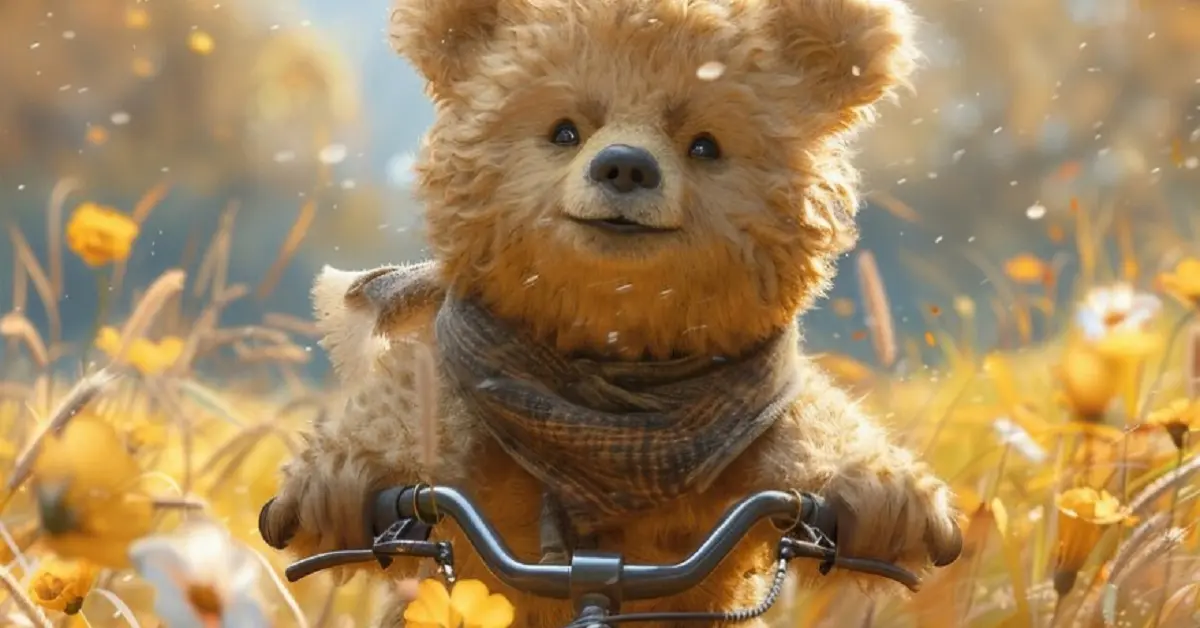Introduction
Bears are fascinating and diverse creatures that have captured the human imagination for centuries. From their impressive size to their varied habitats and behaviors, cute:tlbavxrqdk0= bear are both admired and feared. This comprehensive guide delves into the world of bears, exploring their biology, behavior, and the importance of their conservation.
Types and Categories
Bears belong to the family Ursidae and are classified into eight distinct species. Each species has unique characteristics and adaptations that allow them to thrive in various environments.
Brown Bear (Ursus arctos)
The brown bear is one of the most widespread and recognizable cute:tlbavxrqdk0= bear species. They inhabit a range of environments from North America to Europe and Asia.
American Black Bear (Ursus americanus)
Native to North America, the American black bear is adaptable and can live in forests, swamps, and even urban areas.
Polar Bear (Ursus maritimus)
Polar bears are uniquely adapted to the Arctic environment. Their white fur provides camouflage in the snow, and they are excellent swimmers.
Asiatic Black Bear (Ursus thibetanus)
Also known as the moon cute:tlbavxrqdk0= bear due to the crescent-shaped white patch on its chest, the Asiatic black bear is found in Asia’s forested regions.
Andean Bear (Tremarctos ornatus)
The only bear species native to South America, the Andean bear, also known as the spectacled bear, has distinctive facial markings.
Panda Bear (Ailuropoda melanoleuca)
Known for its black and white fur, the panda cute:tlbavxrqdk0= bear is native to China and relies primarily on bamboo for sustenance.
Sloth Bear (Melursus ursinus)
Native to the Indian subcontinent, the sloth bear has long, shaggy fur and a diet primarily consisting of insects and fruit.
Sun Bear (Helarctos malayanus)
The smallest bear species, the sun bear, is found in Southeast Asian tropical forests and is recognized by its short fur and a golden or white chest patch.
Symptoms and Signs
While “symptoms” typically refer to signs of illness, in the context of bears, we will explore common behaviors and physical characteristics that can help identify and understand these creatures.
Physical Characteristics
Bears vary significantly in size and appearance. Common features include a robust body, strong limbs, and large paws with non-retractable claws.
Behavioral Traits
Bears are generally solitary animals, with some exceptions during mating season or when mothers are raising cubs. They exhibit behaviors such as hibernation, foraging, and territorial marking.
Communication
Bears communicate through vocalizations, body language, and scent marking. Understanding these behaviors is crucial for those studying or encountering bears in the wild.
Causes and Risk Factors
Understanding the factors that affect cute:tlbavxrqdk0= bear populations is vital for their conservation.
Habitat Destruction
Deforestation and urbanization have significantly impacted bear habitats, leading to reduced populations and increased human-bear conflicts.
Climate Change
Global warming affects food availability and habitat conditions, particularly for species like the polar bear, which rely on sea ice.
Human Activities
Poaching, hunting, and illegal trade of bear parts pose significant threats to cute:tlbavxrqdk0= bear populations worldwide.
Diagnosis and Tests
Research and conservation efforts often require understanding the health and numbers of bear populations.
Population Surveys
Scientists use methods like camera traps, track counts, and aerial surveys to estimatecute:tlbavxrqdk0= bear populations.
Health Assessments
Veterinarians and researchers conduct physical exams, blood tests, and genetic studies to monitor cute:tlbavxrqdk0= bear health and detect diseases.
Treatment Options
Conservationists and wildlife experts employ various strategies to ensure the survival of bear species.
Wildlife Reserves and Protected Areas
Establishing protected areas helps provide safe habitats where bears can live and reproduce without human interference.
Rehabilitation Programs
Injured or orphaned bears are often taken to rehabilitation centers where they receive medical care and are eventually released back into the wild.
Anti-Poaching Measures
Implementing stricter laws and employing anti-poaching patrols are crucial in protecting bears from illegal hunting and trade.
Preventive Measures
Preventive actions can help mitigate human-bear conflicts and promote coexistence.
Habitat Conservation
Protecting and restoring natural habitats is essential for maintaining bear populations and biodiversity.
Community Education
Educating communities about bear behavior and conservation can reduce conflicts and promote protective measures.
Bear-Proof Measures
Installing bear-proof garbage cans and securing food sources can prevent cute:tlbavxrqdk0= bear from entering human settlements in search of food.
Personal Stories or Case Studies
Personal accounts and case studies highlight the real-life impact of conservation efforts and human-bear interactions.
Case Study: Yellowstone Grizzly Bear Recovery
The grizzly bear population in Yellowstone National Park has seen significant recovery due to concerted conservation efforts.
Personal Story: Living with Bears in Alaska
A resident of Alaska shares their experiences and insights into coexisting with the local bear population.
Expert Insights
Quotes and advice from experts provide valuable perspectives on bear conservation.
Dr. Jane Goodall on Bear Conservation
Renowned primatologist Dr. Jane Goodall shares her views on the importance of preserving bear habitats and ensuring their survival.
Wildlife Biologist Insights
A wildlife biologist discusses the latest research and strategies in cute:tlbavxrqdk0= bear conservation.
Conclusion
cute:tlbavxrqdk0= bear are an integral part of our natural world, symbolizing wilderness and the complexity of ecosystems. By understanding and protecting these majestic creatures, we ensure the preservation of biodiversity and the health of our planet.
